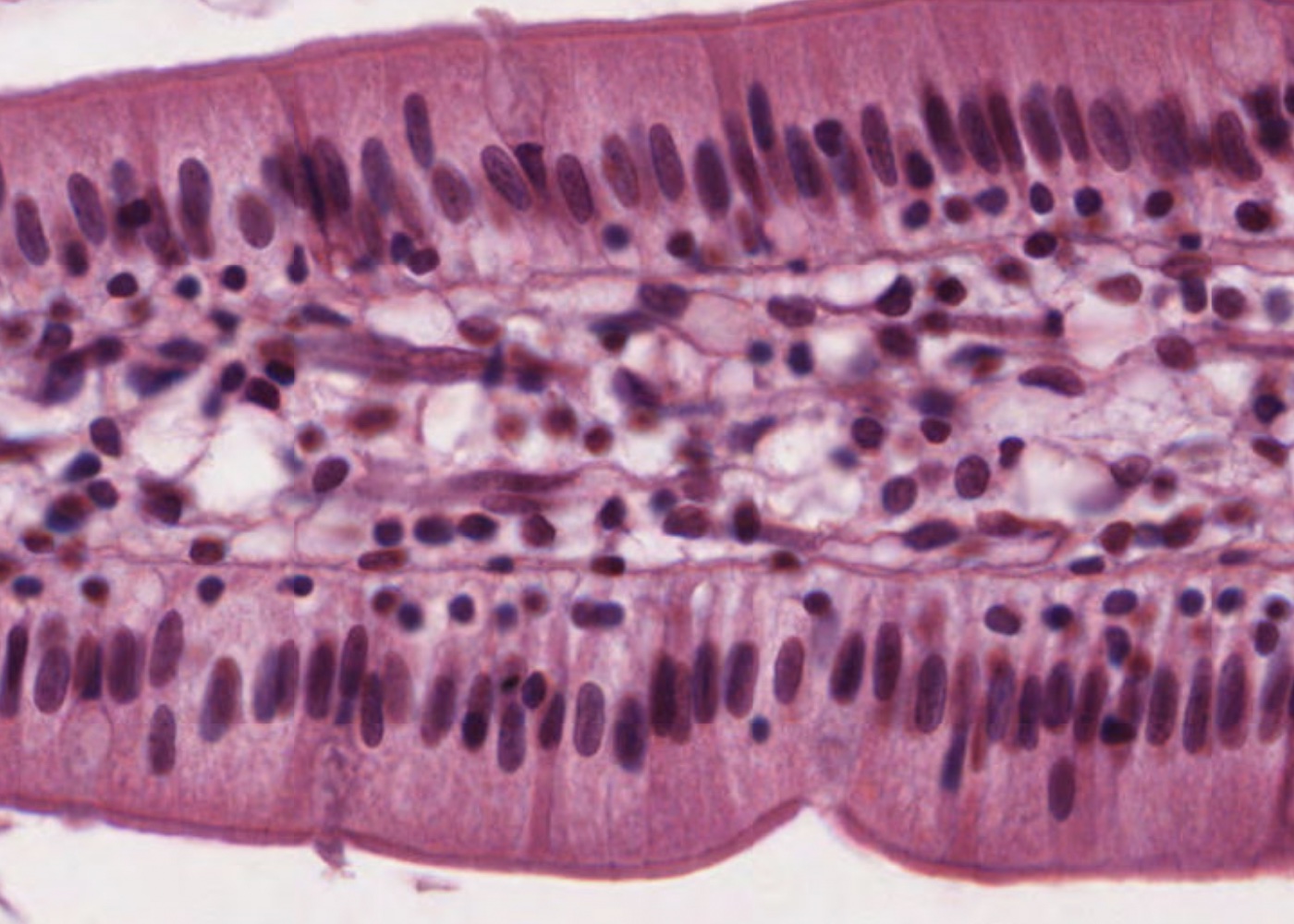Epithelium is one of the four basic tissues of the body. The other three being muscle tissue, connective tissue and nerve tissue. Epithelium is located in most organs of the body and an understanding of the different types of epithelia, and their respective functions, helps you understand functions of organs and organ systems.
Learning outcomes
After viewing the histological images and interactive text in this module you should
- identify and distinguish between all the different classifications of epithelium.
- identify different types of epithelia in various tissues.
- know the characteristics of epithelia.
- identify and describe the various types of cell adhesions and intercellular contacts.
- understand the difference between a basal lamina and a basement membrane and be able to recognize each.
- distinguish between microvilli, stereocilia and cilia and know their specific functions.

